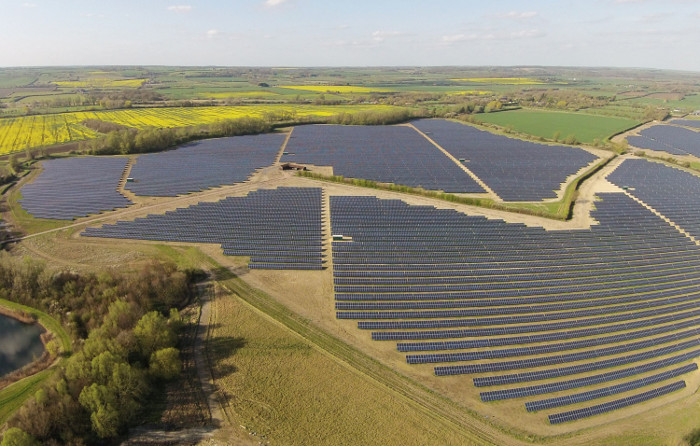The U.K.’s historic decision to vote to leave the European Union (EU) last June continues to send pulses of political shockwaves around the world, but for some industries and financial segments, Brexit has been bright.
While the wider solar outlook for the U.K. remains shady – and in truth, it did so before the Brexit vote – data compiled by Bloomberg shows that solar funds based in the U.K. have more than doubled their trading in the six months since the vote as the weaker pound, lower interest rates and higher power prices have converged to make such investments a safe haven.
In the U.K., solar funds steer cash generated from the sale of solar electricity to their shareholders, and for investors seeking stable and attractive dividends, such investments make more sense now than last summer. Since Brexit, the Bank of England has slashed interest rates in anticipation of economic turmoil. This, combined with a pound sterling that has lost one-fifth of its value prompting rising power prices, means that revenues generated by solar funds are rising.
“The solar funds may be benefiting from enthusiasm from U.K.-based investors seeking protection from pound inflation,” BNEF solar analyst Jenny Chase told Bloomberg. “FITs are also adjusted for inflation.”
BNEF’s data looked at three London-based solar funds – NextEnergy Solar Fund Ltd, Foresight Solar Fund, and Bluefield Solar Income Fund – and recognized an upward trend in trading volumes since Brexit. NextEnergy Solar Fund has returned 18% to investors since Brexit, and all three are performing better than the FTSE 100 Index, which is returning an average of 11%.
Bluefield Partners LLP founding partner Giovanni Terranova told Bloomberg: “Power prices are up. Interest rates are down. U.K. investors avoiding taking exposure overseas are looking for yield at home. There are also opportunities for foreign investors at a discount because of the currency.”
Popular content
NextEnergy Solar Fund this week finalized more than £100 million ($125 million) in long-term infrastructure debt from Macquarie Infrastructure Debt Investment Solutions (MIDIS), which will be used to refinance 21 solar plants with a combined installed capacity of 241 MW. This deal represented the second such partnership between MIDIS and NextEnergy Solar Fund, having arranged £55 million in project financing in April last year – a couple of months before the Brexit vote.
On February 2, Foresight Solar Fund acquired in full the 50 MW-AC Shotwick solar farm, located in Flintshire, Wales. This purchase increased the fund’s installed peak capacity to 420 MW.
“The Shotwick acquisition is in line with the company’s strategy of focusing predominantly on large-scale solar assets while minimizing cash drag risk for investors,” said Foresight Solar Fund chairman Alex Ohlsson. “The company has identified further attractive pipeline assets and expects to deliver additional growth opportunities.”
The U.K. solar boom led Europe in terms of installation figures between 2014 and 2015, with echoes of rapid installation evident in the first quarter of last year. However, since sweeping changes to the country’s solar subsidy scheme – namely the early closure of the Renewable Obligation Certificate (ROC) program and severe cuts to the FIT – installation volumes have tailed off sharply.
This content is protected by copyright and may not be reused. If you want to cooperate with us and would like to reuse some of our content, please contact: editors@pv-magazine.com.


By submitting this form you agree to pv magazine using your data for the purposes of publishing your comment.
Your personal data will only be disclosed or otherwise transmitted to third parties for the purposes of spam filtering or if this is necessary for technical maintenance of the website. Any other transfer to third parties will not take place unless this is justified on the basis of applicable data protection regulations or if pv magazine is legally obliged to do so.
You may revoke this consent at any time with effect for the future, in which case your personal data will be deleted immediately. Otherwise, your data will be deleted if pv magazine has processed your request or the purpose of data storage is fulfilled.
Further information on data privacy can be found in our Data Protection Policy.